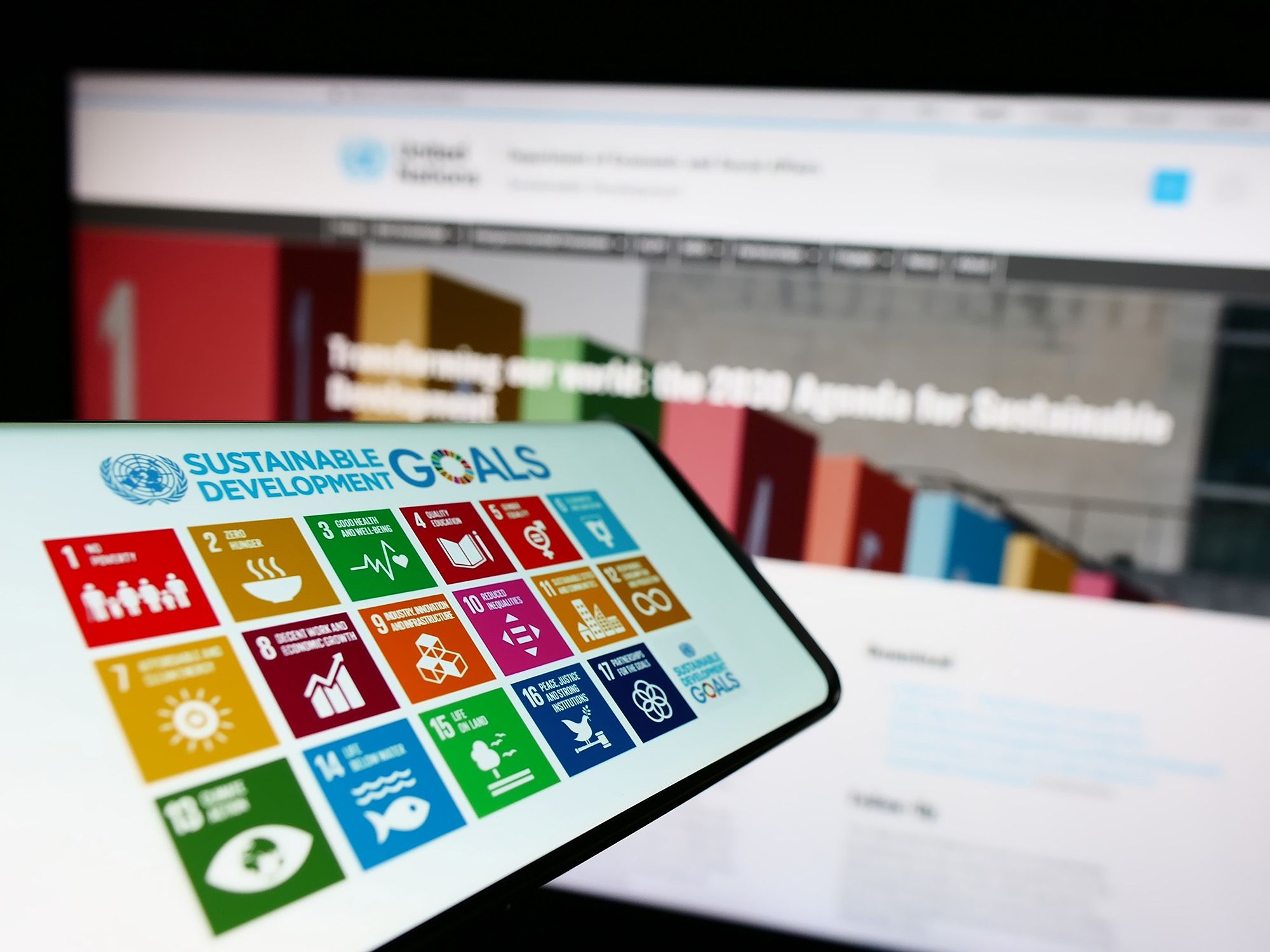2020 marked the first global increase in extreme poverty in nearly 20 years.
Reaching the Sustainable Development Goals (SDGs) has slipped further out of reach in the wake of COVID-19. According to a recent report, around 70% of SDG goals could be reached faster with digital adoption.
Meaning digital technologies, like those we’re developing at Viamo, can help get the SDGs back on track.
This is further underpinned by the recent Mobile Impact Report on SDGs report released by the GSMA, where a notable trend was established: countries that have significantly advanced their mobile connectivity are also making substantial progress towards achieving SDGs.
Mobile technology can be a major catalyst for progress on SDGs. At Viamo, we believe digital solutions have the potential to amplify impact and create a better future for the nearly 3 billion people worldwide who still lack access to the internet.
What is the role of mobile in achieving the Sustainable Development Goals?
The UN’s analysis shows that mobile technology can significantly advance evidence across 119 targets, with 22 targets specifically requiring data and digital technologies.
For instance, mobile platforms have revolutionized education (SDG 4) by providing remote learning opportunities, especially critical in the wake of COVID-19 lockdowns.
In the health sector (SDG 3), mobile technology has played a vital role in disseminating health information, contact tracing, and even remote diagnosis.
One project in Rwanda reached 60,000 community health care workers, training them on mental health, showing the scale and national reach mobile solutions can provide.
But digital’s benefit goes beyond impressive reach. These scalable solutions are more affordable than traditional methods, especially when it comes to trainings.
”With the mobile phone platform, the Rwandan government has been able to educate almost 60,000 community healthcare workers in just a few months — compared to the approximately 25,000 workers they’d been able to train by traveling from village to village for several years.
Ginger Smith-Swintosky, Mental Health Global Program Leader, Global Public Health, Johnson & Johnson
Digital needs to be inclusive to be an amplifier
Digital inclusivity is key in ensuring technology is a unifier rather than a divider. In an era where digital advancements are rapidly transforming the world, these innovations must reach all of society.
If not, we risk widening the very inequalities we aim to bridge.
True digital transformation must be rooted in accessibility and equality, ensuring that everyone, regardless of their gender, socio-economic status, literacy level or geographic location, can benefit from digital advancements.
Viamo’s voice technology provides a practical solution by making vital information accessible to people in their native languages through voice messaging.
In one study evaluating HIV self testing, voice was preferred compared to traditional methods like SMS.
The Viamo Platform takes the power of mobile technology to a new level by utilizing voice technology and national reach through mobile networks.
Our platform is designed to bring crucial services like health, quality education and financial services into people’s hands, regardless of their location, gender, or literacy level.
The Viamo Platform has a loyal audience that we can target campaigns, surveys or training based on their detailed subscriber profiles for greater impact.
Making these services accessible on simple mobile phones opens up a world of possibilities.
”[The Viamo Platform] is a game-changer in minimizing the number of people who are left out of digital media. Its expansive outreach reduces social isolation during crises, which helps prevent mental health problems and strengthen the ability of listeners to address their own difficulties.
UN Women, GESI mainstreaming in COVID-19 response report
Using AI innovation to achieve the SDGs
So, can AI help the SDGs?
The short answer: Yes.
AI has the potential impact to transform sectors like health, education, and financial inclusion. With the Viamo Platform, we’re harnessing the power of mobile connectivity and AI to deliver life-enhancing services to those living in rural and remote areas.
We’ve piloted a project in Zambia utilizing GenerativeAI to deliver a voice-based AI companion people can call for free from a basic, non-internet phone.
By using AI to provide a personalized menu of relevant services, such as health and job information. In addition, we’re developing the ability for AI-driven conversations with local service providers, allowing users to ask questions in natural language and get accurate answers based on their location.
So far, some of the questions have included:
- What are types of contraception?
- What are sexually transmitted diseases?
- What is climate change?
- How much is a bicycle in Zambia?
These conversations enable people to access information and services that are hyper-tailored to their personal needs, further contributing to the SDGs.




